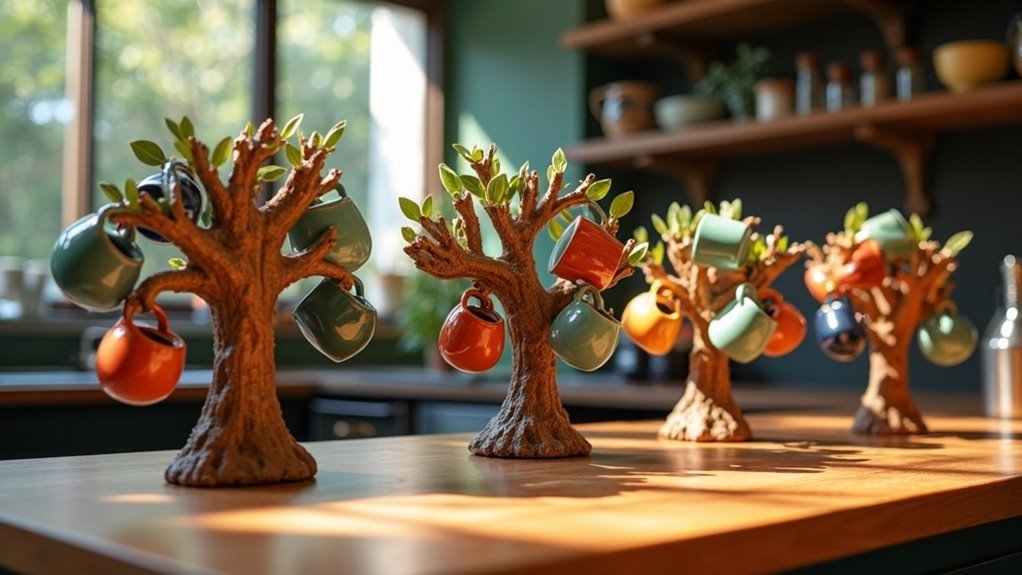Timor Hybrid Coffee is a unique interspecies hybrid between Coffea arabica and Coffea canephora, developed in the 1920s on Timor Island. This cultivar stands out for its exceptional disease resistance and high yield, making it an essential asset in coffee agriculture. Its flavor profile is often described as earthy and herbaceous. Understanding its historical context and development will reveal its significance in sustainable coffee farming practices and economic revitalization in Timor-Leste.
Key Takeaways
- Timor Hybrid Coffee is a unique crossbreed of Coffea arabica and Coffea canephora, celebrated for its remarkable disease resistance and high yield potential.
- This variety was first discovered in 1927 on a plantation in Timor, and by the 1950s, its cultivation began to expand across Indonesia.
- Timor Hybrid Coffee is known for its distinctive earthy and herbaceous flavor profile, setting it apart from other coffee varieties.
- The genetic traits of this hybrid are essential for the development of rust-resistant cultivars, which play a vital role in promoting sustainability within the coffee farming industry.
- The coffee industry serves as a significant source of income and support for the local economy in Timor-Leste, positively impacting nearly half of the population.
Overview of Timor Hybrid Coffee
Timor Hybrid coffee is a notable interspecies hybrid, resulting from the natural crossing of Coffea arabica and Coffea canephora (Robusta) during the 1920s on the island of Timor.
Its unique genetic composition offers exceptional disease resistance, which is crucial for sustaining productivity in challenging growing conditions. Farmers appreciate Timor Hybrid for its robustness and high yield, both of which significantly contribute to coffee production.
Timor Hybrid coffee’s unique genetics ensure exceptional disease resistance, boosting productivity in challenging conditions while delivering robust yields for farmers.
The flavor profile of this coffee is earthy and herbaceous, paving the way for popular derivatives such as Catimor and Sarchimor.
Additionally, the incorporation of disease resistance genes from Robusta enhances its adaptability, making Timor Hybrid a vital asset in combating coffee leaf rust.
Historical Context of Timor-Leste
As European powers sought new trade routes and resources in the 1600s, the island of Timor-Leste became a focal point of colonial interest, primarily due to its rich sandalwood forests. This led to the establishment of Portuguese and Dutch control, significantly impacting the region’s socio-economic landscape, particularly in relation to coffee cultivation.
Timor-Leste saw the introduction of coffee as a cash crop in the 1860s, with a significant reliance on Arabica varieties to meet global coffee market demands. The coffee industry became a crucial part of the local economy, despite facing challenges such as civil unrest due to oppressive governance in the early 20th century.
Territorial agreements between the Dutch and Portuguese in 1910 further shaped the agricultural practices in the region.
After achieving independence in 2002, Timor-Leste renewed its focus on revitalizing coffee production, aiming to harness its unique coffee heritage and improve its standing in the global market.
Discovery and Development of Timor Hybrid
Discovered in 1927 on a coffee plantation established a decade earlier, the Timor Hybrid represents a significant advancement in coffee cultivation, merging the desirable traits of Coffea arabica and Coffea canephora (Robusta).
The cultivation of this hybrid began in the 1940s, with its seeds spreading across Indonesian islands by the late 1950s. Researchers identified the genetic resources of the Timor hybrid as crucial for developing rust-resistant cultivars, such as Catimor and Sarchimor, which are vital in today’s coffee production.
Its importance lies in its ability to combat coffee leaf rust, ensuring resilience in diverse climates, especially during the post-World War II era, and shaping sustainable coffee farming practices.
Economic Impact of Timor Coffee
The coffee industry in East Timor is a vital component of the local economy, with nearly half of the population depending on it for their livelihood.
The Timor hybrid coffee is central to this economic framework, contributing to stability through:
- Implementation of sustainable coffee farming practices
- Revitalization of plantations that were abandoned after 1975
- Development of disease-resistant coffee varieties to ensure productivity
- Involvement of young baristas in promoting quality coffee experiences
- Expanding export opportunities despite global competition
East Timor’s dedication to producing high-quality coffee not only strengthens its position in the market but also builds community resilience, making the Timor hybrid an invaluable asset for enhancing local economies.
Processing Methods in Timor-Leste
The processing methods for coffee in Timor-Leste are crucial in determining the flavor profile and quality of the final product, significantly impacting its market appeal.
Predominantly, the wet method is employed, where beans undergo fermentation to remove mucilage before drying, which enhances the inherent characteristics of the Arabica plant.
In rural households, you may find beans being pan-roasted over an open fire, which imparts a distinctive flavor. Following this, the roasted beans are pounded into a fine powder and brewed using traditional cloth filtration.
However, urban areas are experiencing a shift towards instant coffee, contrasting with these time-honored practices and reflecting the evolving coffee landscape in Timor.
Preservation Efforts for Timor Coffee
Heritage conservation initiatives are vital in preserving Timor coffee, as they emphasize maintaining its unique characteristics and cultural significance.
Community engagement programs encourage local participation, ensuring that knowledge and traditional practices surrounding Timor coffee are passed down through generations.
These collaborative efforts not only protect the coffee’s legacy but also raise awareness of its importance within the global coffee landscape.
Heritage Conservation Initiatives
Although many coffee varieties face the threat of extinction, initiatives like the Ark of Taste play an essential role in preserving the cultural and agricultural heritage of Timor coffee.
These efforts focus on:
- Collecting traditional coffee products and local knowledge
- Raising awareness of Timor hybrid coffee’s unique qualities
- Collaborating with Gastronomic Sciences students for deeper insights into coffee
- Securing funding support from the European Union for coffee-related projects
- Promoting biodiversity and traditional agricultural practices in coffee cultivation
Community Engagement Programs
As coffee enthusiasts recognize the cultural significance of Timor coffee, various engagement programs have emerged to foster awareness and support for its preservation.
These initiatives, like the Ark of Taste, safeguard genetic diversity and traditional cultivation methods essential for Timor hybrid coffee. Collaborations with institutions, such as Gastronomic Sciences students at Pollenzo, promote sustainable practices that enhance local farming conditions.
The Slow Food movement plays an important role by providing funding and resources, ensuring the relevance of Timor coffee in global markets. By participating in workshops and events, locals cultivate pride and ownership over their rich coffee heritage, fortifying community engagement.








